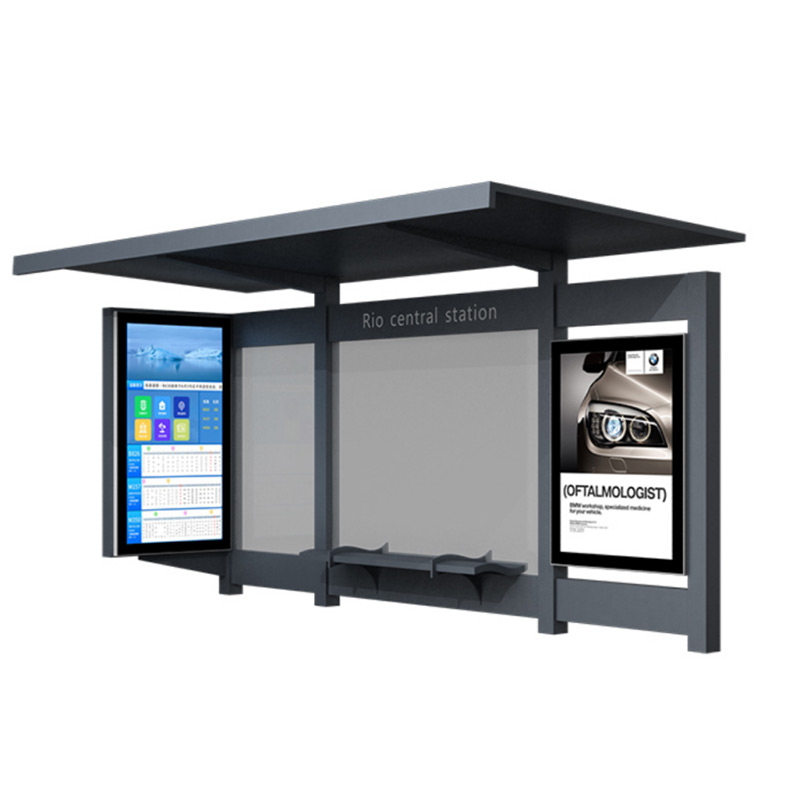Understanding the Demographic Reach and Audience Metrics of Bus Shelter Advertising Stock
2024-06-11
Bus shelter advertising is a dynamic and effective way to reach a diverse audience. The strategic placement and frequent exposure make it an appealing option for businesses looking to enhance their brand visibility. In this blog, we'll delve into the typical demographic reach and audience metrics associated with Bus Shelter Advertising Stock, helping you understand why this medium could be a valuable addition to your marketing strategy.
Broad and Diverse Demographic Reach
One of the standout features of bus shelter advertising is its ability to reach a wide range of demographics. Here’s how this medium captures various audience segments:
1. Commuters: The primary audience for bus shelter ads are commuters. This includes daily travelers who use public transportation for work or school. This group often consists of working professionals, students, and retirees, providing a broad age range from young adults to seniors.
2. Pedestrians: Bus shelters are typically located in high foot traffic areas, capturing the attention of pedestrians. This includes shoppers, tourists, and local residents walking through busy streets or commercial areas.
3. Drivers and Passengers: Those in vehicles, whether driving or as passengers, also form a significant portion of the audience. Stopping at traffic lights or driving through congested areas allows them time to notice and engage with the ads.
4. Local Residents: People living in the vicinity of bus shelters are repeatedly exposed to the ads. This repeated exposure builds brand recognition and familiarity over time.
Audience Metrics That Matter
Understanding the metrics associated with bus shelter advertising helps in evaluating its effectiveness. Here are some key metrics to consider:
1. Impressions: This metric indicates the number of times an ad is viewed. High-traffic locations will naturally yield more impressions, providing greater visibility for the advertised brand or product.
2. Reach: Reach refers to the number of unique individuals exposed to an ad over a specific period. Bus shelter ads, strategically placed in urban and suburban areas, often achieve extensive reach, engaging a broad audience.
3. Frequency: This metric measures how often the same individual is exposed to an ad. High-frequency rates are common with bus shelter advertising, as daily commuters and local residents repeatedly encounter the ads, reinforcing brand messages.
4. Engagement: While harder to quantify than digital metrics, engagement can be inferred through surveys and market research. Effective bus shelter ads often feature eye-catching designs and clear calls to action, prompting viewers to seek more information or make a purchase.
5. Dwell Time: The amount of time a person spends in view of the ad. At bus shelters, dwell time can range from a few seconds to several minutes, offering ample opportunity for messages to be absorbed.
Demographic Insights
To maximize the impact of bus shelter advertising, it's crucial to understand the specific demographics of your target area. Here are some insights:
1. Age: Depending on the location, bus shelter ads can target various age groups. Urban areas might have a higher concentration of young professionals and students, while suburban shelters could reach more families and older adults.
2. Income Levels: Areas with higher income levels might attract ads for luxury goods and services, while locations in more diverse economic areas could be ideal for a wider range of products, including everyday essentials.
3. Interests and Lifestyles: Proximity to certain landmarks or commercial zones can indicate the interests and lifestyles of the audience. For instance, shelters near fitness centers or parks might be perfect for health and wellness products, while those near shopping districts could favor retail advertisements.
Conclusion
Bus Shelter Advertising Stock offers a unique and effective way to reach a broad and varied audience. By understanding the typical demographic reach and key audience metrics, businesses can strategically place their ads to maximize visibility and engagement. Whether targeting daily commuters, pedestrians, or local residents, bus shelter advertising provides a versatile and impactful medium to enhance brand awareness and drive consumer action.



